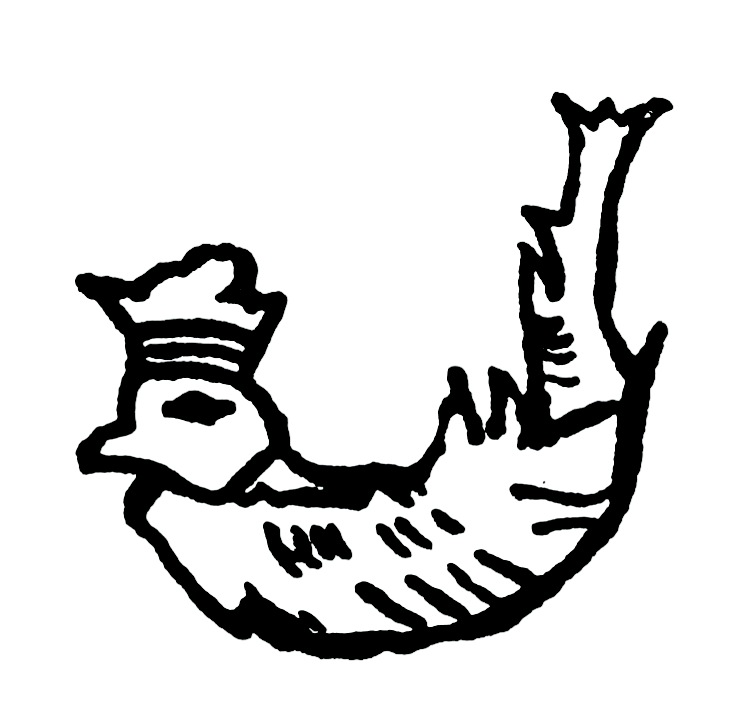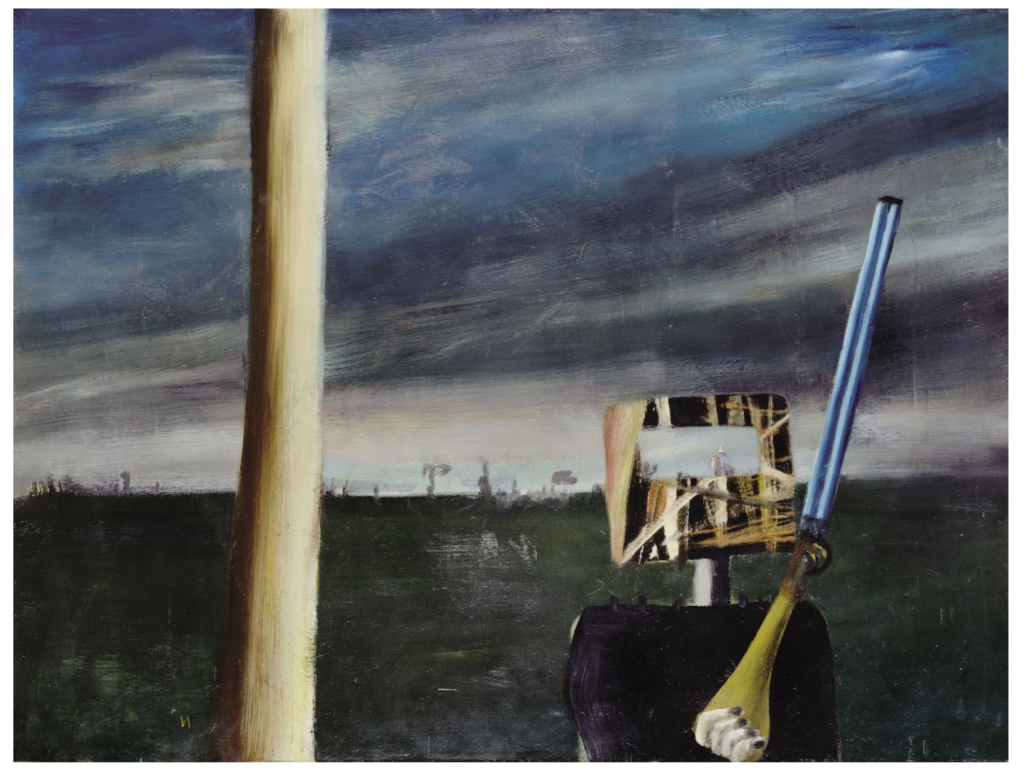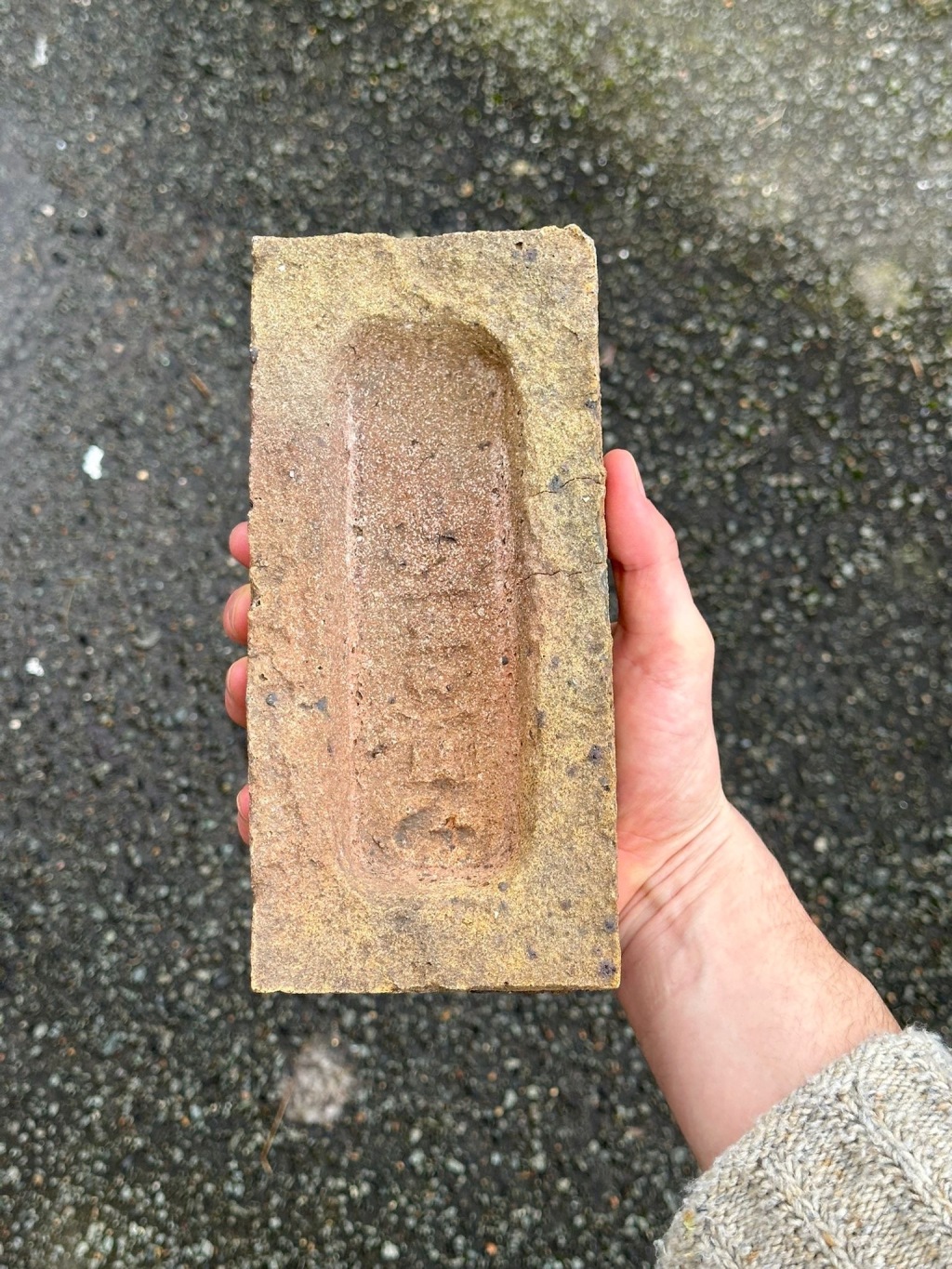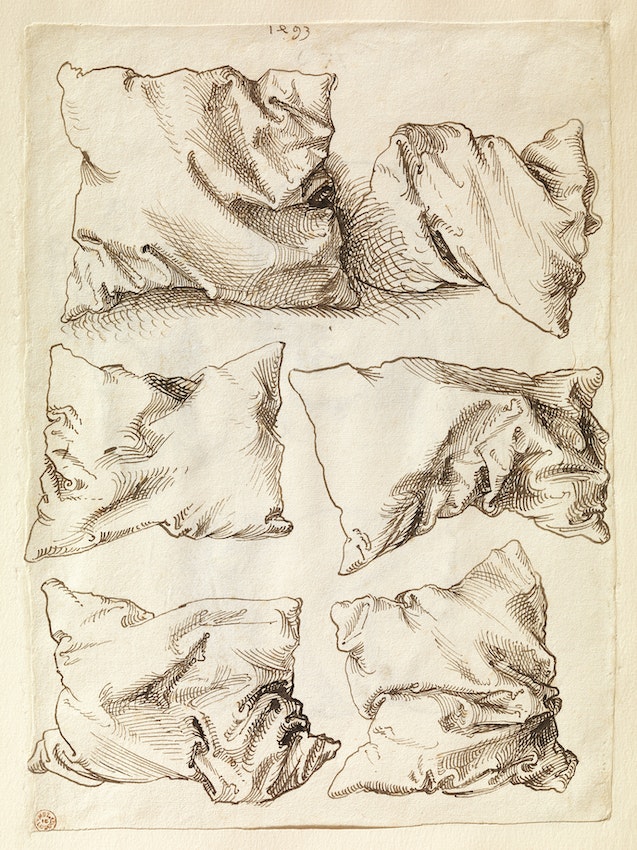John Keane, artist, on an Owl butterfly.
GB Tell me why you’ve chosen the Owl butterfly as your object of beauty
JK I first encountered an Owl butterfly or Caligo, when I was on a trip to Brazil when I was doing a project with Greenpeace. And I was invited to spend time on one of their ships, which was chugging down the Amazon as part of their anti-logging campaign. And I didn’t see the butterfly out in the wild, I saw it was in a natural history museum. I just saw this butterfly and I was transfixed by the hyperrealism of the mimicry. It’s called an Owl butterfly and has those extraordinary eyes, although I think, in evolutionary terms, it’s not trying to do that, so I was asking myself how that works in terms of evolution? It’s the kind of realism that an artist would strive to produce. How does that appear on the back of a butterfly’s wing through some kind of natural process? And then I became fascinated by the idea of the waters of the Amazon, the idea of reflection, of symmetry, and how, not just as humans, just as living beings, we’re hardwired to respond to symmetry. Most life forms have a symmetry; human faces do, our bodies do, and it seems to be set very deep in our brain somewhere.
The butterflies who started developing spots, however crude, were the ones that probably didn’t get eaten because their predator might do a double take and think that’s something bigger than me looking back. Perhaps as they mutated the more naturalistic representations would have been the ones that survived to be reproduced. I started reading books about evolution and Darwin, so encountering this Caligo butterfly had set me on that train of thought that did result in quite a lot of work through riffing on those ideas.
GB It seems to have evolved this way for such clear reasons. Do you think that makes it more beautiful?
JK It’s beauty to me initially, was its inexplicable nature, its extraordinariness; not because I can see where it came from or understand it but precisely because I couldn’t understand it. That drew me in. It’s visually striking but it also raises all sorts of questions which you want explaining or somehow put into context.
GB I like the way that in this body of work, you link it to the Rorschach ink blot tests so it goes from objectively beautiful symmetry to the completely subjective.
JK I did sort of explore this through a later exhibition called Intelligent Design, which is about the idea of us as human beings seeing what we’re hardwired to see, what we’re programmed to see, what we expect to see – and how that also translates, not just visually, but into understanding the world, into belief systems, ideologies, in interpreting the world in a way that often says more about us and our relationship to the world than it does about the world itself.
GB Do you think your butterfly is a good argument for evolution or a good argument for the hand of God?
JK I was baffled at first and I thought about the hand of God, so I was very thrilled to understand more because I’m an atheist and it raises these challenges, so I wanted to try to explain and it.
GB Would you expect everybody you know to find the Owl butterfly beautiful?
JK It would be strange. I think it would be unusual for someone not to find it, if not beautiful, to at least be struck by its extraordinariness – to the extent that it’s even as if the highlights have been painted in the eyes. But then lots of butterflies do have eyespots to a lesser or greater extent.
GB Do you think anything manmade can be as beautiful as something in nature?
JK Yes but it’s different. It’s a different kind of beauty. I suppose what is striking about the butterfly is that it looks manmade. It looks like someone’s painted it. I suppose that lends it a strange beauty.
GB Is there a relationship between beauty and danger for you, having spent so much time in war zones?
JK We’re always sort of toying with danger, and it has a kind of appeal from a safe distance. And that’s why we enjoy films and movies that involve imagining ourselves in dangerous circumstances.
GB When you’re painting in a warzone, is there still something beautiful about the process of painting, even though it’s something horrific?
JK I think if you’re dealing with that difficult, ugly subject matter, the only way to draw in a viewer is if you do find something, I suppose the word is beauty, but I mean it’s not necessarily a pretty beauty. If you look at the First World War landscapes of Paul Nash, there is a terrible beauty but the implications of how that landscape came about are appalling and ugly. Within anything dealing with subjects that are hard to deal with, there has to be a way in somehow and that is a kind of beauty I suppose.
GB I know you’re fascinated by the mimicry of the butterfly. Are you interested in fakes in art?
JK It certainly raises lots of questions. You’re not looking at what you thought you saw if you get a very good fake. But what this says more than anything is how ludicrous the nature of the art market is these days with ridiculously inflated prices and the art market sadly is a function of the concentration of wealth. That wealth has to find a home and it finds it the art market and that has to sustain itself and the work must appreciate in value and it just gets ludicrous – so every time that overpriced work turns out to actually not be what we thought I think, yay! I think there’s probably a lot collusion on the part of the experts and the auction houses because it’s in their interests, if it’s really good, to pass it off as real.
GB So, when Walter Benjamin’s talking about the aura of the work of art, do you think that’s rubbish, if somebody else can make a Rothko?
JK Yes and no. I was in the Rothko room earlier actually. It’s so bloody dark in there. When I was about 16, I started doing my own Rothkos on sheets. There is a something about authenticity. If you know it’s by someone, and you can just literally be able to see how they worked, there’s a value to that, seeing how it was made. And the thing about original works of art, rather than seeing work in reproduction, or digitally or something, you’re occupying the space, you’re in the presence of something. I wouldn’t detract from that at all. You may end up being mistaken but if it’s some Italian Renaissance artist you might not be familiar, but you take a shine to it, what does it matter in the end as long as it’s not someone consciously making a fake, if the attribution’s wrong, but it’s near enough. There’s something to being in a room with an object created by someone you revere, sharing the same space that the person who made it occupied in front of it. There’s something special about that.
GB What makes something worthy of the word Beauty to you?
JK It’s not something you can define or nail down, like my poor butterfly in a frame that has been nailed down. It’s always the cliché, in the eye of the beholder, it is obviously down to what has a resonance for you and that differs wildly from person to person. I think, most people would agree about what’s beautiful in the natural world. But actually, the natural world is just beautiful.





